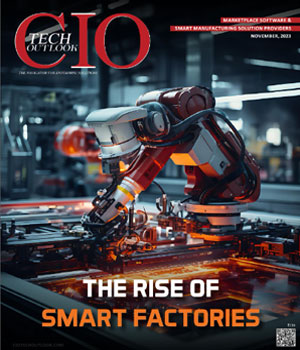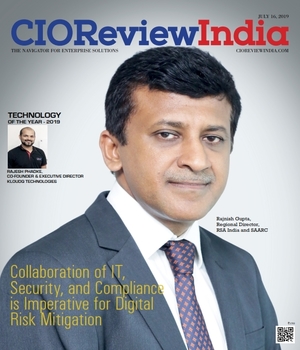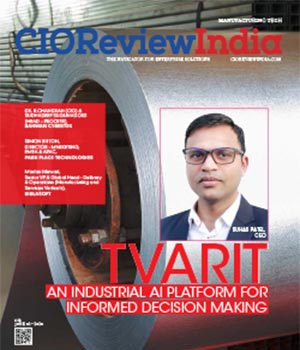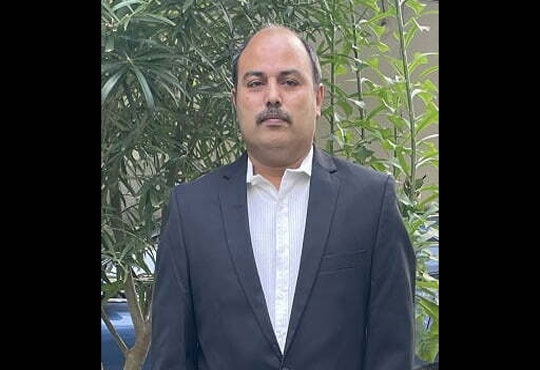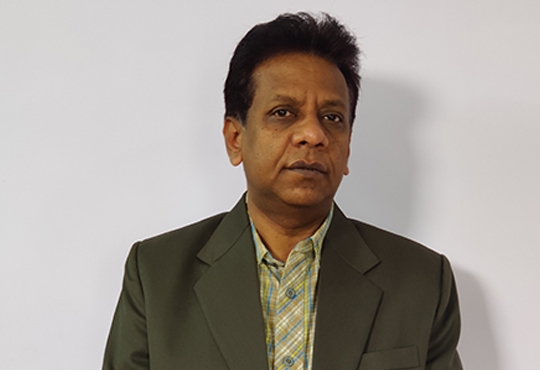
Manufacturing IT: A Journey Towards Robust Future
Manish Chandegara, CIO, Cera Group | Sunday, 05 June 2022, 16:34 IST
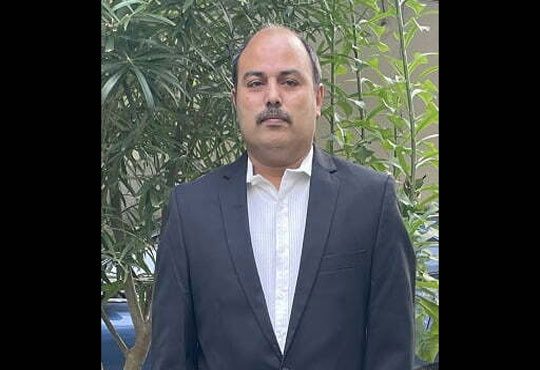 Manish Chandegara, CIO at Cera Group in an interaction with CIO Tech Outlook, shares his insights on manufacturing IT challenges like Data management, Cybersecurity, and more.
Manish Chandegara, CIO at Cera Group in an interaction with CIO Tech Outlook, shares his insights on manufacturing IT challenges like Data management, Cybersecurity, and more.
How are you driving the change for Cera? What are the novel technologies the company is implementing today in its operation line?
At Cera, we are continually implementing technologies in our manufacturing plant. For example- When the pandemic struck, we, like other manufacturing firms, were confronted with a significant labor shortage. In no time, continuing with the existing production became incredibly challenging, and we fell behind the quarterly and yearly target.
However, to overcome the situation, we planned to implement robots in our manufacturing line. These robots not only helped us to tackle the immediate situation of labor shortage and production loss, but also assisted us to leap forwards towards automation. Hence, the critical activities that were previously labor-intensive are now completely machine enabled, extending our way towards faster response and increased contactless production.
Data management is a major challenge for manufacturers. Technology platforms are now constantly generating data about production lines, supply chains, employee performance, etc. Today, lack of data is not longer a problem, but it’s an inability to use data to generate insights. How can this problem be solved?
With the insurgence of IT in every aspect of operation, a huge amount of data is now being generated at every second. Hence, this piling data asset can create added burden to the industries if it is not utilized in a proper form. However, to utilize and extract the critical information out of it, industries now need to leverage Artificial Intelligence and Machine Learning.
For example- with optimum utilization of past data, production information, etc, companies can now predict the future market trends and manufacturing figures. Moreover, data analysis can assist an organization with the development of dashboard management. Today, data analysis plays a significant role in deciding the critical aspects that include but are not limited to – Budget, Planning, Finance,and expense.
Today, organizations are no longer confined to the old, offline trends but are making significant shifts to robust online activities. Because of this, it is easier for their security to be compromised. How can manufacturing entities overcome the cybersecurity challenge?
With every passing day the cybersecurity threat is turning into a daunting challenge. At the present scenario, there is increasing responsibility on the IT team to be on high alert and play a proactive role.
Moving forward, every organization needs to implement zero trust infrastructure for turning itself into a cybersecurity savvy entity. In the coming days, zero trust infrastructure will help the entities to effectively mitigate the chances for the malware or ransomware attack. Furthermore, if any cyber attack takes place, zero trust infrastructure will help the company to protect its data from being distorted.
The widening skill gap has been a source of massive concern as the industry moves towards automation. What role does a CIO have in overcoming this issue? How are you handling this situation for Cera?
Keeping the workforce abreast with the advancements is a critical task that every CIO has to perfect. The employees should always be encouraged for their self-development through knowledge and training.
At Cera, I have taken a few critical measures to ensure that our IT team is always on par with the industry standard. Firstly, at Cera we now allot one hour of time to every employee for their personal growth and development. We also conduct a quarterly technical training programme, wherein every employee has to mandatorily attain a pass certification.
Secondly, developing user awareness is also a crucial aspect, as implementing updated technology wont deliver fruitful results without optimum use cases. Hence, it is imperative to keep the users updated, gains much importance. At Cera, we update the users with our quarterly or yearly plans.
Technical failures in machinery can completely disrupt delivery schedules, thereby damaging reputation. These can also inflate the maintenance budgets. How should manufacturing industries implement technology to mitigate the downtime challenges?
Unplanned downtime can lead an organization to heavy loss, while distorting the entire production goal. Hence, it is imperative for a manufacturer to keep the machines updated and in proper working order. The organizations also need to plan for disaster recovery sites, wherein if the existing machines run into some error the production can be shifted to the disaster recovery plant.
The manufacturing industry is now massively implementing advanced technologies. With this ongoing situation, How do you see the role of a CIO evolving in the near future?
The manufacturing industry is now transforming into a technology driven industry, and in such circumstance, every critical business plan, needs deep involvancy of the CIO. Hence in the presence scenario, a CIO is no longer a technical leader but a business enabler.
Any CIO now has a significant role to play in unleashing faster production, better input, best output and cost saving. Hence, in the days to come, a CIO of a company will play equally important in deciding the future of a company.
CIO Viewpoint
Novel Manufacturing Technologies to Accelerate...
By Abhrasnata Das
Manufacturing IT: A Journey Towards Robust Future
By Manish Chandegara, CIO, Cera Group
Revolutionizing the Electrical Equipment...
By Janifha Evangeline
CXO Insights
AI/ML: Enhancing the Efficiency of Predictive...
By Govind Singh, Group CIO, Dalmia Bharat
Prime Aspects Successful Business Leaders...
By - Santosh Rai, Chief Information Officer, Asahi India Glass
How Industry 4.0 is Transforming the...


